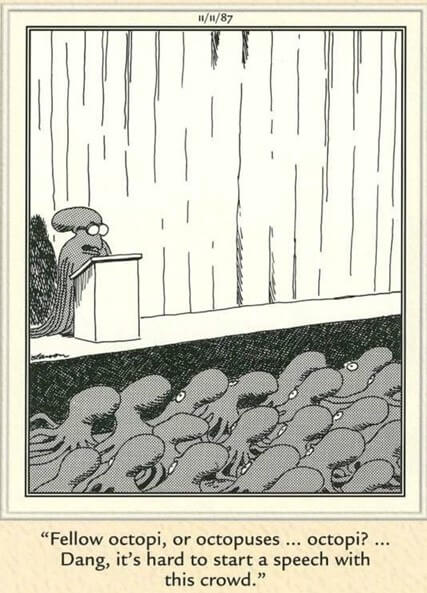This issue’s post

Speak spoken language when you speak!
- Most presentations sound like they’re read off a written document.
- The spoken language is much more suitable.
“It should be noted that the profits generated in Q1 2022 did not match the ExCo projections and in this regard, we have favoured a bookkeeping system that preserves the current trend…” This sentence is taken from a management committee meeting. One wonders why most professional presentations are so boring. That’s one of the reasons: because people talk like they write a report. When they should be doing the opposite: using spoken language.
Because when we listen to written language (or corporate jargon for that matter), our brain ‘micro-disjuncts’: it has to translate unnatural expressions or turns of phrases into a more natural language. But the speaker’s flow does not take these micro-cuts into account and moves forward like a galloping horse. The listener therefore regularly falls behind and loses bits of the message to keep up with the speaker…
The speaker should use simple, everyday words, that can be assimilated as quickly as they’re heard. They should repeat their ideas, too: because the brain forgets when there is too much information. So, we must emphasise what it must retain. Repetition structures the speech: “I will explain this to you.” And we explain. “I’ve told you about this and now I’m going to tell you about that…”. That way, we follow the flow of thought. “Having spoken about this and that, everything I have just said proves my demonstration…”. And we immediately think: he/she spoke about A, then B. And A + B = C. Now, that’s clear.
Simplicity. Repetition.
What else?

The bigger the doubt, the more it matters
- Doubt is proportional to what is at stake.
- The strength of the doubt is therefore an indication of the value of the stake.
Here’s something you should know: the more a project matters to us, the more we have to face ourselves during its execution. It’s as if we had a double whose sole purpose was to sabotage us. And the more we care about the project, the stronger this double is!
So, if you find yourself procrastinating, sabotaging, doubting yourself and your abilities, getting distracted by anything and everything or refusing to get down to work and over-criticising yourself, well, there’s gold at the end of the line! These defensive reactions, this fear of failure, are definite indications of how much you value what you are doing.
Beware, it could just as easily be the opposite! But once you’ve recognised that this is a good sign, all you have to do is to get down to work, without thinking too much about the rest.
Right now!
What’s in it for you?

Figures of speech to captivate your audiences
- The Art of speech is thousands of years old.
- Here are five figures of speech used by the masters.
The presentation, as you might expect, wasn’t born with business companies. Very early in human history, orators, the most famous of whom was Cicero, codified what are known as “figures of speech”, i.e. techniques to energise and make speech attractive. Here are some of them.
The understatement, which tends to say less to make you hear much more. For example: “It is true that sometimes the military, exaggerating the relative powerlessness of intelligence, neglect to use it. (De Gaulle, in Le Fil de l’Épée)
The antithesis, where opposites are put together in order to shock. As here: “I have never seen a child without thinking that it would become an old man, nor a cradle without thinking of a grave.” (Gustave Flaubert, in Pensées.)
The oxymoron, which is a surprising – even contradictory – combination of words to reinforce an idea. Thus: “The superfluous, a very necessary thing.” (Voltaire, in Le Mondain)
The prosopopoeia, in which a dead, absent or imagined person – or an inanimate object – is made to speak or act. As in: “- I am a fox, said the fox.”
– “Come and play with me,” said the little prince. “I am so sad…”
– “I cannot play with you”, said the fox. “I am not tame”.
(Antoine de Saint-Exupéry, in The Little Prince)
The hypotyposis, which consists of describing an object or a scene in a precise and pictorial way, to make it come alive. Example: “My insides are burning. The violence of the venom twists my limbs, makes me misshapen, overcomes me. I am dying of thirst, I am suffocating, I cannot scream. This is hell, eternal pain! See how the fire rises! I burn as I should. Go, demon! (Arthur Rimbaud, excerpt from Nuit de l’Enfer)
We often spontaneously call upon these figures. But it goes without saying that “Art” begins with the awareness and then the mastery of all these techniques.
For more:
– The Penguin book of Modern Speeches, by Brian MacArthur. Penguin Books.
– Figures of Speech: 60 ways to turn a phrase, by Arthur Quinn. Routledge.
 Najberg Milne
Najberg Milne


